This painting depicts a citizen-class prostitute. Lower on the social ladder were brothel prostitutes and whores, and higher were courtesans and concubines.
Source: Gli abiti de veneziani di quasi ogni età con diligenza raccolti e dipinti nel secolo XVIII, by Giovanni Grevembroch (1731–1807), which in four volumes contains over six hundred watercolours of how Venetians dressed in the 1700s.
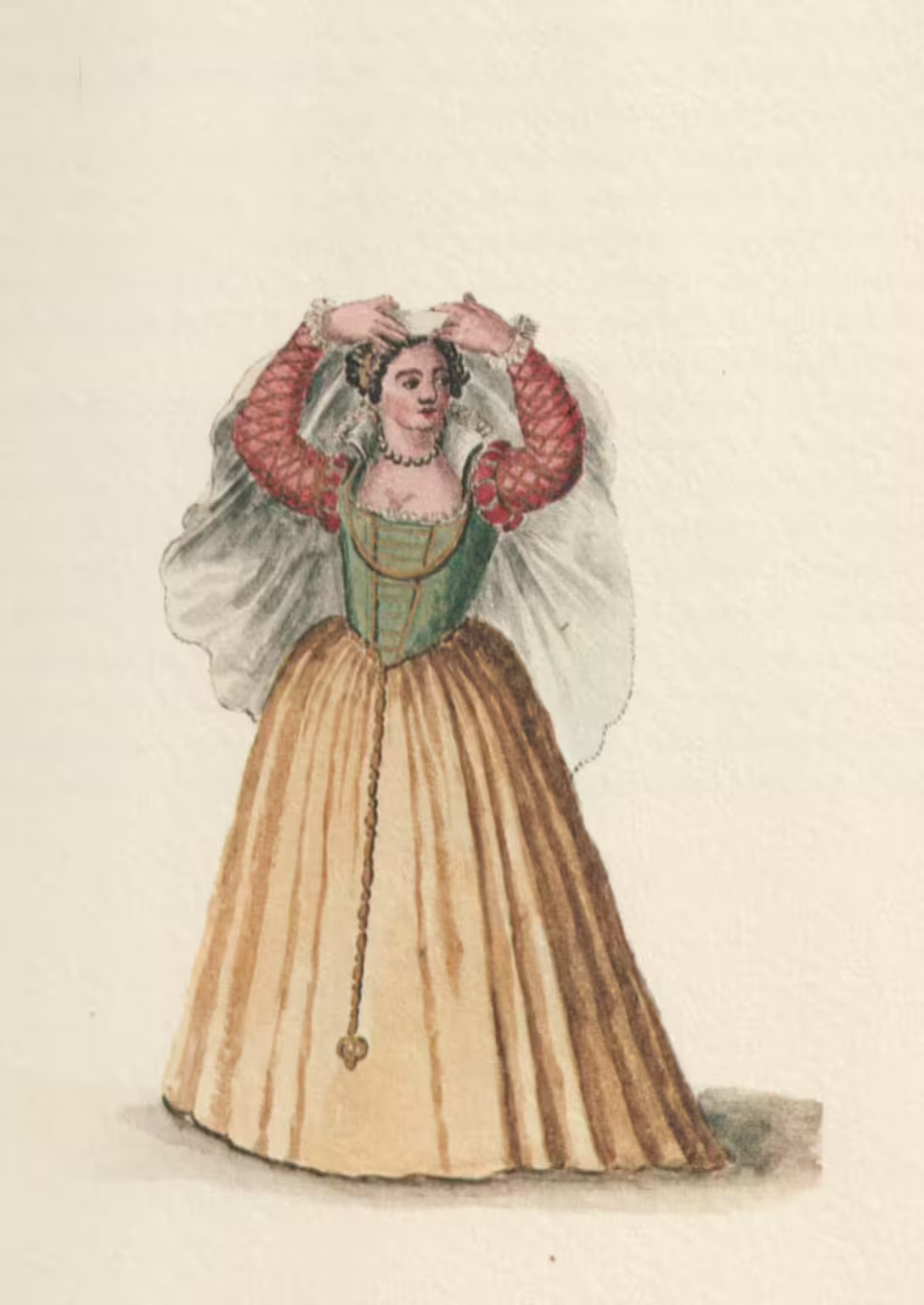
Prostitute
Prostitutes could not live on the Grand Canal, nor wander around the City during Holy Week, nor wear the white headscarf as a young maid. In memory of Antonio Grimani in the year 1622, July 21,1 a measure was taken to tax this type of Females, who paid the rent of their Houses above forty ducats, in order to obtain two thousand to help the poor Converts,2 the Proclamations were made, 197 came forward; that at the rate of one percent, the money was found. The Edict was repeated in the Month of June in the year 1626, but since the disobedients were not punished then, only 139 were enrolled, and the pension instead of fifteen, was increased by twenty-five percent.
In spite of so many prohibitions they used Pearls and Pendants of value, and they stood at the Windows with astute manner. If for some time they had had acquaintance with some Nobleman, they usurped the Surname of his House, in order to better deceive their Foreign Lovers, who supposed them to be Ladies of importance. The cleverer of them knew well how to weave the Net, leading them to secret Places, by making them believe that, which they were not. Most of the times they invented the figure of Husband, to assure them of the use of Pomp, and of everything, which was forbidden by the Public prescriptions. From a Print of the XVI Century we find the Catalogue of the principal Prostitutes,3 and where they lived in Venice, and the Ruffians, Houses, and their pretensions, which at that time did not ascend to the number of 215. Such a curious Nomenclature was dedicated by A. C. to Livia Azalina primary Courtesan at San Marzilian.
Considering to whom the tolerance of a large number of Lovers should be adapted, according to the sentiment of the faithful Pastor, we conceive that none deserves it more than the Lady Ancilla Giove.
Translator’s notes
- There was a doge Antonio Grimani (1521–1523), i.e., a century earlier, while in 1622 the doge was Antonio Priuli (1618–1623), so probably Grevembroch has made some mistake here. In the compendium of laws of the Republic of Venice regarding prostitution, there’s no mention of such a tax. ↩︎
- The convertite were prostitutes turned nuns for the salvation of their souls. The monastery of the Convertite was on the Giudecca island. ↩︎
- The Catalogo di tutte le principal et più honorate Cortigiane di Venetia is translated and discussed elsewhere on this site. ↩︎
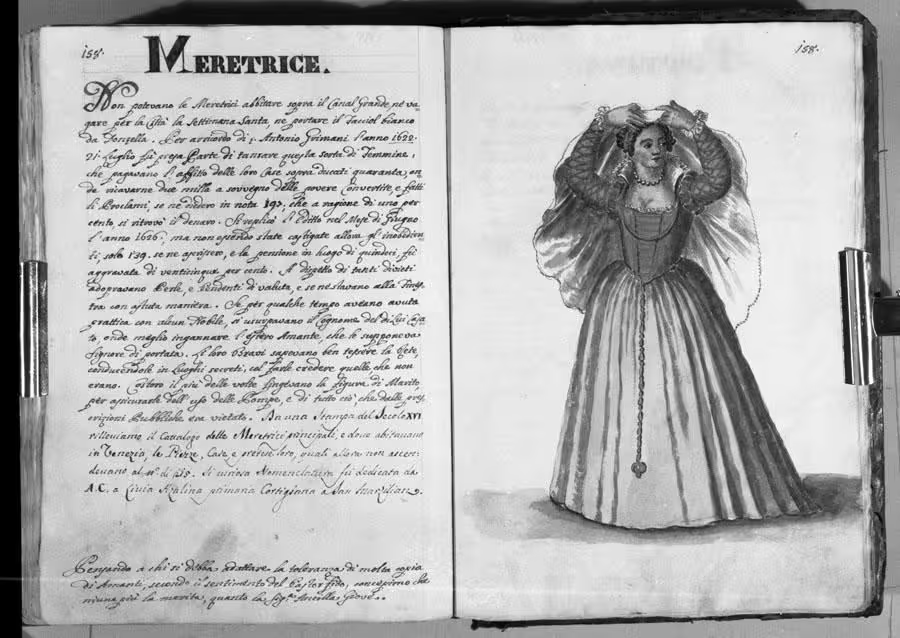
Original Italian text
Meretrice
Non potevano le Meretrici abbitare sopra il Canal Grande, ne vagare per la Città la Settimana Santa, ne portare il Facciol bianco da Donzella. Per arricordo di Antonio Grimani l’anno 1622. 21 Luglio fù presa Parte dì tansare questa sorta di Femmine, che pagavano l’affitto delle loro Case sopra ducati quaranta, onde ricavarne due milla a sovvegno delle povere Convertite, fatti li Proclami, se ne diedero in nota 197; che a ragione di uno per cento, si ritrovò il denaro. Si replicò l’Editto nel Mese di Giugno l’anno 1626, ma non essendo state castigate allora gl’inobedienti, solo 139 se ne ascrissero, e la pensione in luogo di quindeci, fù aggravata di venticinque per cento.
A dispetto di tanti divieti adopravano Perle, e Pendenti di valuta, e se ne stavano alla Finestra con astuta maniera. Se per qualche tempo aveano avuta prattica con alcun Nobile, si usurpavano il Cognome del di Lui Casato, onde meglio ingannare l’Estero Amante, che le supponeva Signore di portata. Li loro Bravi sapevano ben tessere la Rete, conducendole in Luoghi secreti, col farle credere quelle, che non erano. Costoro il più delle volte fingevano la figura di Marito, per assicurarle dell’uso delle Pompe, e di tutto ciò, che alle prescrizioni Pubbliche era vietato. Da una Stampa del Secolo XVI rilleviamo il Catalogo delle Meretrici principali, e dove abitavano in Venezia, e le Piezze, Case, e pretese loro, quali allora non ascendevano al n. di 215. Si curiosa Nomenclatura fu dedicata da A. C. a Livia Azalina primaria Cortigiana a San Marzilian.
Pensando a chi si debba adattare la toleranza di molta copia di Amanti, secondo il sentimento del Pastor fido, concepimo che niuna più la merita, quanto la Sig.a Ancilla Giove.
Grevembroch (1981), vol. 3, p. 158.
Related articles
- Gli abiti de veneziani — by Giovanni Grevembroch
- Prostitution in Venice
- A catalogue of Venetian prostitutes
Bibliography
- Grevembroch, Giovanni. Gli abiti de veneziani di quasi ogni eta con diligenza raccolti e dipinti nel secolo XVIII, orig. c. 1754. Venezia, Filippi Editore, 1981. [more]
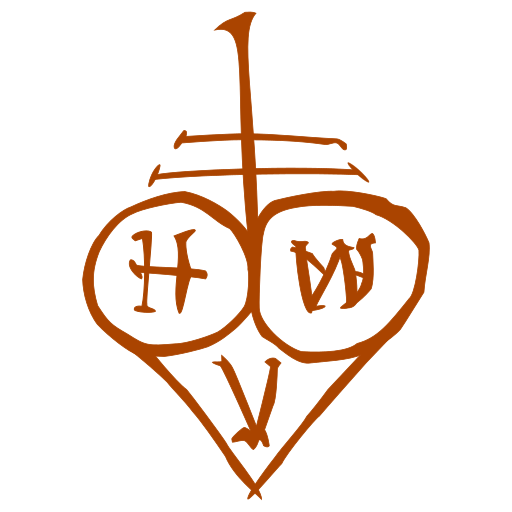
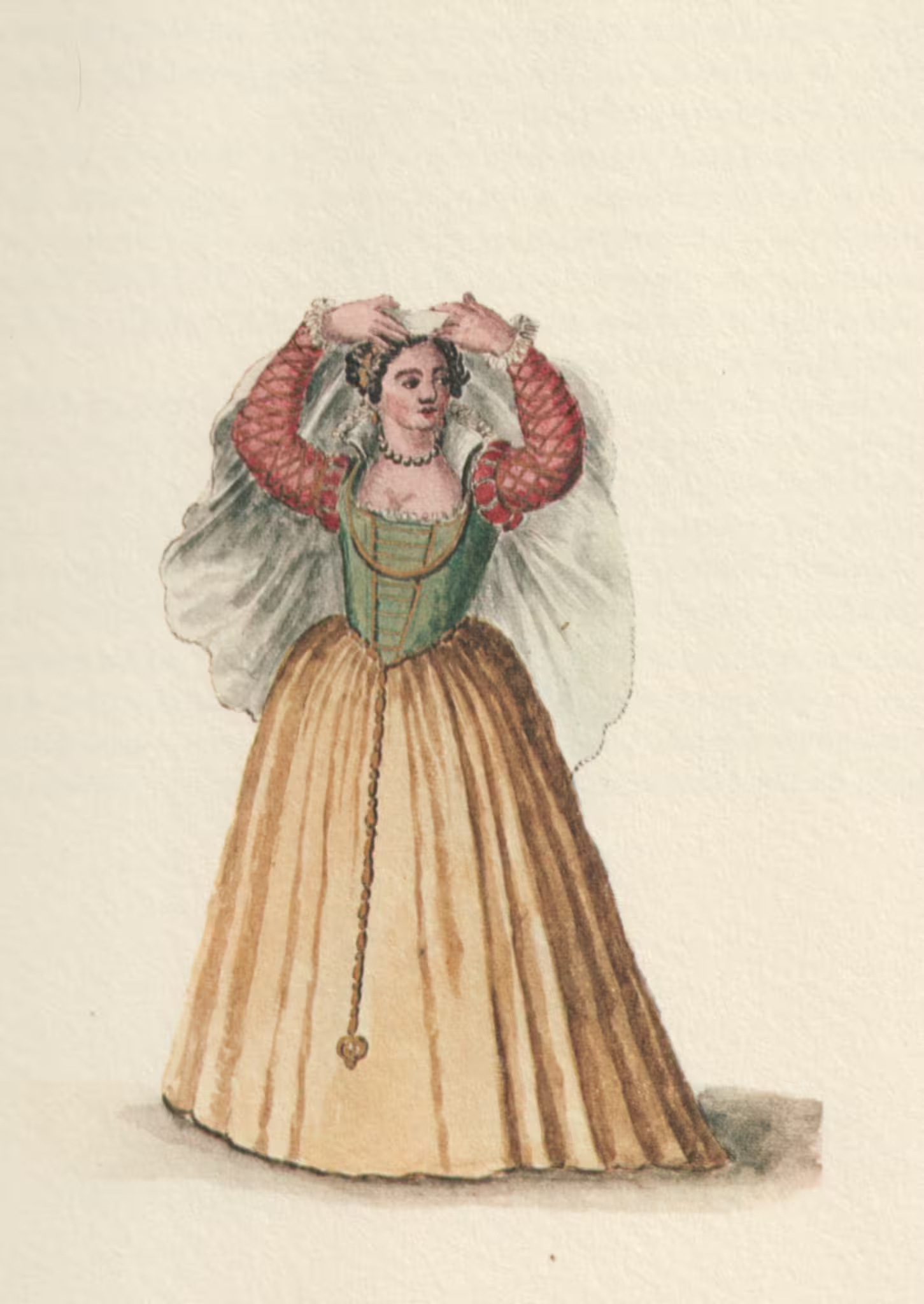
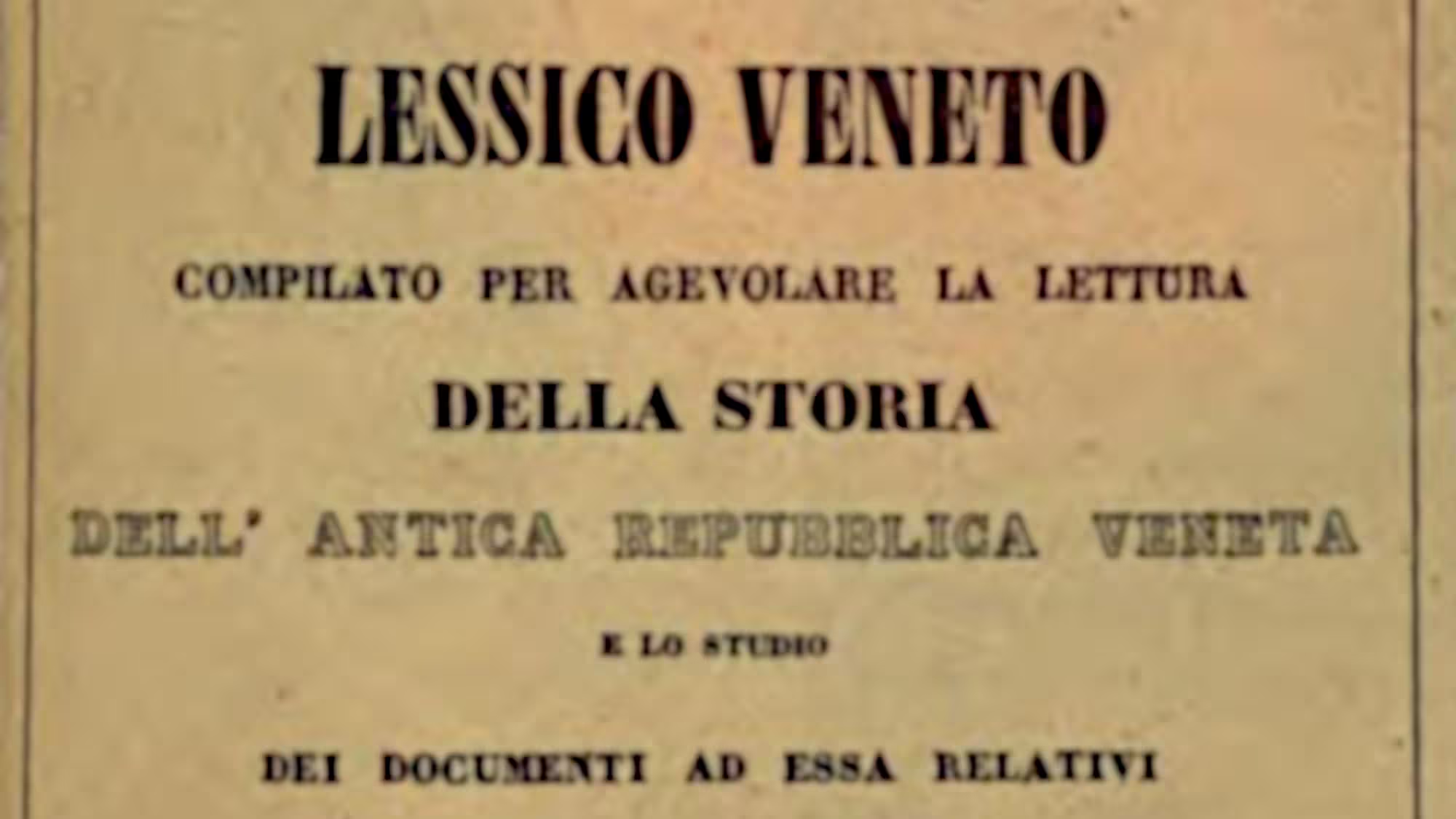
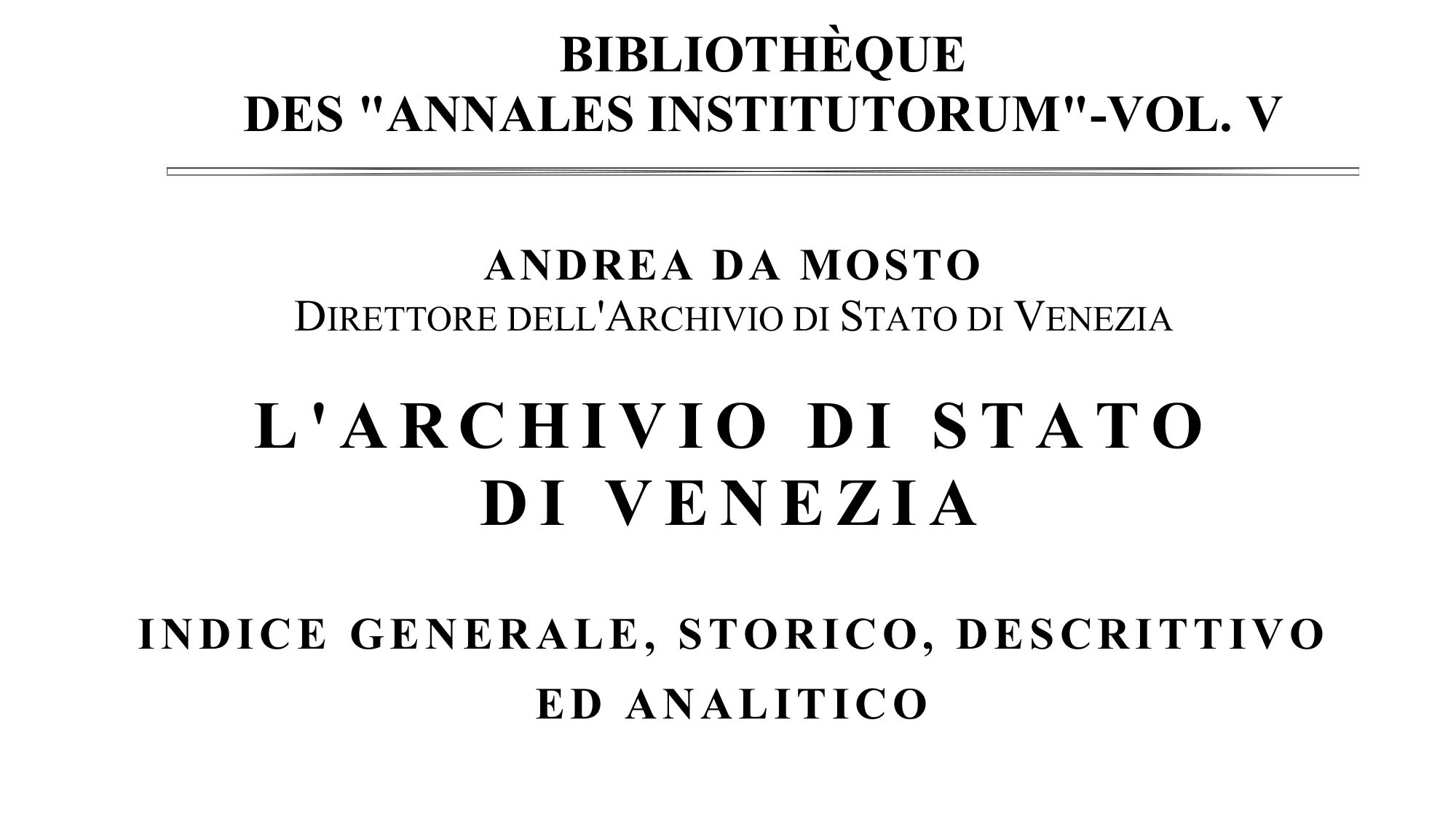
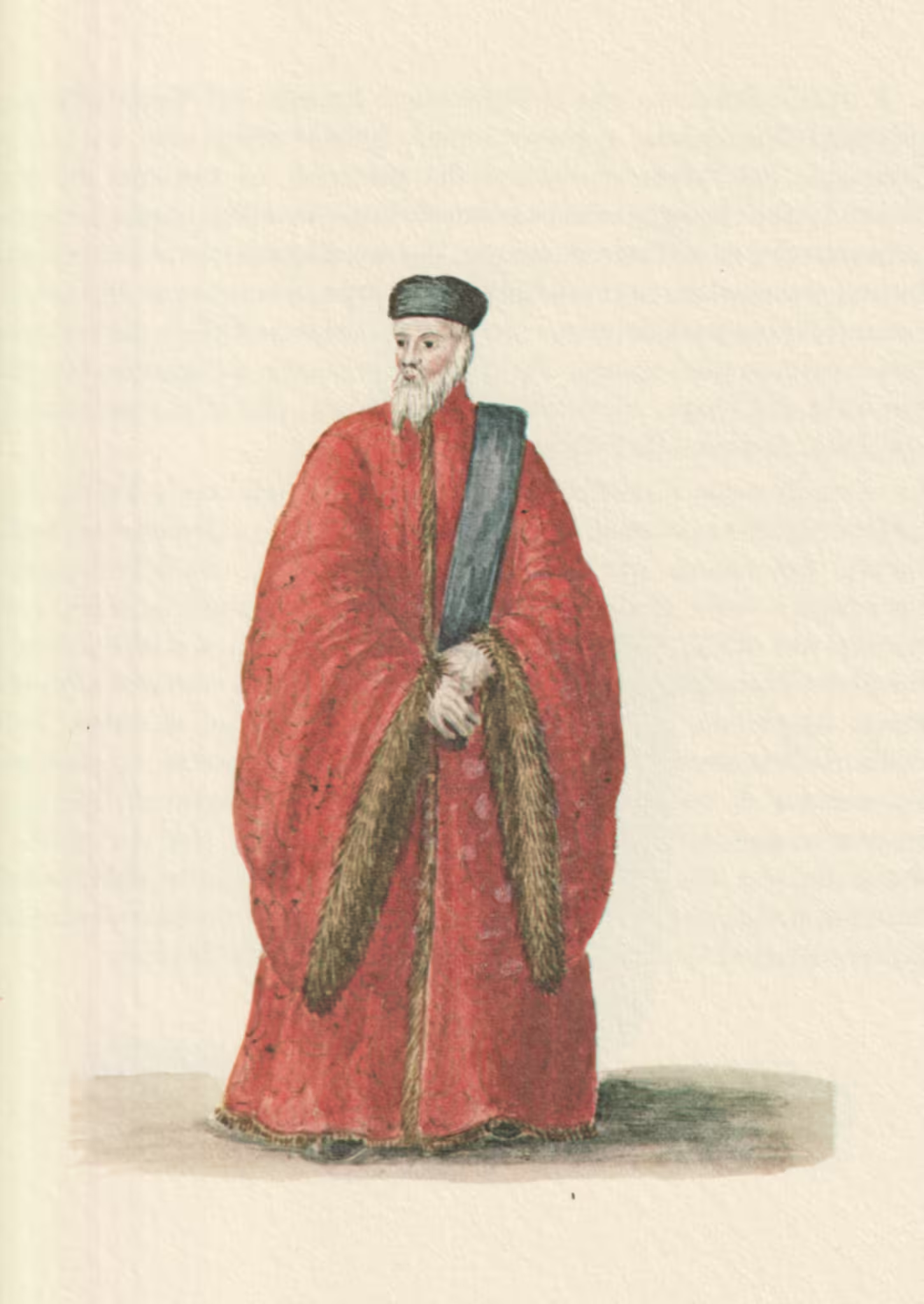
Leave a Reply